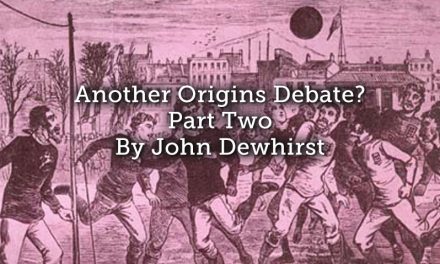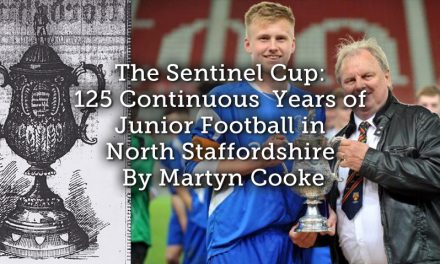For the first three parts of this series see
Part 1 – https://goo.gl/Fx38w5
Part 2 – https://goo.gl/pxkonF
Part 3 – https://goo.gl/Anou9H
1867 saw the introduction of the Reform Act, which increased the voting franchise and almost doubled it. Political organisation became essential and John Charles was eminently suited to this. The census of 1871 shows his occupation still as law stationer. But, by 1881, he has become a political agent. His association with Wharncliffe was crucial to his political rise and also to the Wharncliffe family. It is not surprising that Wharncliffe gave his patronage, possibly advised by John Charles, to the Wharncliffe Charity Cup competition in Sheffield, first played for in 1879. His name now associated with a prestigious charitable cause, enabled his cousin to be elected Member of Parliament for Sheffield in 1880. Another advantageous association for John Charles was with the Winn family of Nostell Priory, near Wakefield. In 1874, Rowland Winn inherited the house. He had already been the MP for Pontefract for six years and, eventually, became the Chief Whip of the Conservative Party. John Charles had acted as his agent in the election campaign. In 1876, under the stewardship of John Charles, the first great political demonstration on behalf of the Conservatives was held at Nostell, a place where John Charles was to organise numerous party rallies. His leadership and organisational abilities in respect of this did not go unnoticed by Party officials. The last of the rallies was held in August 1884. Over 120,000 tickets had been sold for this event and the actual crowd was estimated at just shy of 100,000. In February 1885, John Charles was given an illuminated address for his services in Wakefield. The Sheffield Daily Telegraph gave the following report:
‘Presentation to Mr J. C. Shaw. Speeches by The Earl Of Wharncliffe And Mr Winn M.P. Yesterday afternoon a gathering of a very interesting character took place at the Bull Hotel, Wakefield when Mr J. C. Shaw of Sheffield received a handsome testimonial in recognition of his valuable services to the Conservative cause. The proposal to express in a tangible way the regard felt by the party towards Mr Shaw, originated after a great demonstration at Nostell last summer, the success of which was mainly due to the indefatigable efforts of Mr Shaw’.
The presentation took the form of a silver salver, an illuminated address and a purse of gold worth £200. The Earl of Wharncliffe gave an interesting insight into the qualities of a political agent, saying,
‘There was no doubt that an office like that held by Mr Shaw required many personal qualifications. In the first place, a Parliamentary agent must have very complete knowledge of the law. He must have it at his fingers’ ends, so that he might not be caught like a rat in a trap. Then he ought to have an intuitive knowledge of men, by which he was able to make out not merely what they pretended to be but what they really were. Another great requisite was the power to hold his tongue, the faculty of secrecy; and again a Parliamentary agent ought to be a gentleman on whose word and integrity the most implicit reliance should be placed’.
In his reply, John Charles stated that he had been involved in the political cause for the last twenty years, which means he did indeed engage himself after the Great Flood. Whilst the census of 1871 shows him still as a law stationer, in 1875, a letter to the Dransfield solicitor’s practice in Penistone is evidence that he had become a political Registration Agent based in Bank Street, Sheffield. The Wakefield presentation was testament, not only to his very able administrative capabilities, but also to the fact that he clearly mixed very comfortably with the social elite. Chief among those who were subscribers to his presentation was the Duke of Norfolk, James Lowther 1st Viscount Ullswater, the Hon. Payan Dawney, the Hon. A. E. Gathorne Hardy and Lieut.-Col. Sir Henry Edwards. The list also included George Jobson Marples, who was one of his sponsors for membership to the Middle Temple, W. C. Leng of the Sheffield Daily Telegraph and also Nathaniel Creswick.
-
Two Posters showing the great political demonstrations held at Nostell Priory and organised by John Charles Shaw. He was appointed agent for the Midland Union of Conservative Associations based in Birmingham shortly afterwards.
Source Author
The 1881 census shows John Charles as a political agent. He had five children, two boys and three girls and the family resided at 442 Manchester Road, Upper Hallam, Sheffield. The house was called Lydgate. It is no coincidence that when he moved to Moseley in Birmingham, to 104 Church Street, he named the house Lydgate. Why this happened is unknown. Certainly, his first wife had come from an area in Hallam called Lydgate. There was a Presbytarian Chapel in New Mill, close to Penistone, called Lydgate and Penistone itself was a hot-bed of Non-Conformism. John Charles’ son Bernard, attended Wesley College in Sheffield, as did John Ness Dransfield’s two eldest boys. If the name Lydgate was used regarding the memory of his first wife, it might not have gone down well with his other two. The 1891 census shows Annie his second wife living at Scarborough with all the girls and a new son Stuart, aged nine. Why the family were in Scarborough is an unknown, as is the whereabouts of John Charles. However, in 1893, Annie dies suddenly in Scarborough.
John Charles’ appetite for work is prestigious. The reasons for absence from lodge meetings by members are given because of illness. Not so, John Charles. The reasons for his absences are always because he is out of town on business. In giving the address at his retirement in 1912, the Duke of Norfolk claimed that John Charles in the course of his political duties ‘spread himself out and turned up in every corner of England and Wales’. He is eventually rewarded by becoming the Honorary Secretary of the Midland Union of Conservative Associations, covering ten counties. The office was based in Salisbury Chambers, Union Street, Birmingham. It appears, at first, that John Charles commutes to Birmingham to conduct business. He is a very busy man and would be regularly visiting his political bosses in London. This could possibly explain why he is not with his family in Scarborough, at the time of the census.
In July of 1896, John Charles marries for the third time, on this occasion to Louise Glover, aged 36, at Manningham in Bradford. Louise was the daughter of Thomas Glover, a farmer, and she was born at Knowle near Birmingham. The marriage certificate describes John Shaw, widower, as a Gentleman of Park View, Birmingham. He is described as 56 years of age. Steele quotes a press statement in his book, which described John Charles Shaw as ‘the gentleman who would not grow old’. This was based on his performance in a veteran’s side against the Sheffield Club in 1885, Shaw being 55 at the time of this game. Whether Louise was aware of his true age is, of course, not known, but what is certain, is his facility of masking the truth in respect of ‘not growing old’. In October 1899, he became a joining member of the Lodge of Charity, in Birmingham. The records show that he joined from the Britannia Lodge Number 139, his address is Church Road, Moseley and his age is recorded as 45. His athletic prowess must have been carrying him very well. He was proposed into the Lodge of Charity by Sir James Sawyer and seconded by James Rowbotham, who came originally, from a Sheffield family. Sir James was head of the Conservative Association in Birmingham. He was also a magistrate for Warwickshire and Birmingham, a position John Charles would soon occupy. In June 1906, John Charles applies for membership of the Middle Temple. By now, he has been Secretary of the Midland Union for many years and must have been spending considerable time in London. He is proposed by George Jobson Marples, a barrister at Law of the Inner Temple and Justice of the Peace for the County of Derby and seconded by Joseph William Hume Williams, who was introduced to John Charles at the Junior Carlton Club. John Charles writes several letters in support of his application, which included his educational background. He wanted to be exempt from the preliminary examination and claimed his magisterial experience would suffice. He writes,
‘I have been in the Commission of the Peace for the County of Worcester for 8 years, a Magistrate for the City of Birmingham for 5 years and engaged in political work for more than 20 years’.
He was granted exemption from the examination. His address was Lydgate House, Moseley, eldest son of Benjamin Shaw, political organiser, aged 66. He remained a member until his death in 1918.
-
Copy of the letter written by Shaw to the Middle Temple outlining the details of his education at Penistone Grammar School.
Source Author
Louise had a son called Gerald Stanley and their home remained 104 Church Road, Moseley. It was a large residence, needing also to accommodate two of John Charles’ daughters Jane and Alice, from his previous marriage. At the time of John Charles’ death, his brother, George, was also living at the house. John Charles retired from office in 1912. In March of that year, the Birmingham Gazette and Express reported under the headlines of ‘Honour for a Birmingham Gentleman’ that the Earl Marshal, His Grace the Duke of Norfolk had presented John Charles to King George V on the occasion of His Majesty’s Midlands Levee. In December, John Charles was given another address in Birmingham, in recognition of his achievements and services. This time, it was presided over by His Grace, the Duke of Norfolk and he was presented with a cheque for the sum of £1,120, there being over three hundred subscribers to this award. If the address at Wakefield was prestigious, the one at Birmingham held at the Imperial Hotel surpassed it. Apart from the Duke of Norfolk, also present were the Viscount Windsor and Col. Sir John Bingham Bart. Many letters of apology were presented: Duke of Rutland, Duke of Newcastle, Earl of Dartmouth, Earl of Plymouth, Earl of Coventry and Earl Manvers to name but a few. Perhaps the most poignant of these was one written by Sir Nathaniel Creswick, who had been knighted in 1909 for services to the Volunteer Movement. He remained the military man to the end, saying,
‘I am very sorry that old age and infirmity prevent me from being present on the 19th inst. Not only on account of your unique services to the Conservative cause, but also as I think as one of the oldest of your personal friends. I am especially glad that the Duke of Norfolk who for many years has been a great helper of the old Volunteers who were under my command, will make the presentation’.
John Charles was eighty two when he reluctantly retired. He died on the 23rd November 1918 aged eighty eight. His wife Louise had purchased the burial plot at Brandwood End Cemetery, Kings Heath Birmingham. The grave is now designated as number 1326, in section B2CE and both Jane and Alice are buried with him. Full obituaries appeared in the Birmingham and Sheffield press, but as Steele points out, it is doubtful that anyone else he was associated with, particularly in sport, was aware of his death. His wife and Thomas Rowbotham were executors of the will and his effects amounted to £4,373.9s.7d. The burial plot has no delineation nor has it a headstone and there is nothing to say who is there or anything of their achievements. Perhaps Wharncliffe’s secrecy quality of a political agent was rigorously applied.
The headstones of Shaw’s grandfather, mother and father (Penistone churchyard). John Ness Dransfield (Stottercliffe cemetery Penistone) and John Marsh (Penistone churchyard).
Source Author
-
John Charles Shaw’s grave at Brandwood End Cemetery. The empty space in the middle!
Source Author
-
John Charles Shaw
Source kind permission of Hallam Football Club
Conclusion
John Charles Shaw came from a modest background. He possessed, however, qualities and skills that enabled him to manoeuvre and navigate his way around quite a rigid social hierarchy. He was a leader and thrived in positions of responsibility. The modern epithet of ‘mover and shaker’ would not go amiss and, as such, he was a prodigious workaholic. Respected by all he came into contact with, regardless of social standing, his achievements remain the true testament to this outstanding individual. If all the aspects of the early development of football in Sheffield are taken into account, then, it is his name that emerges, directly or indirectly, as the most prominent. His name occurs most regularly concerning athletics within the town, with the taking part and even winning, across numerous events, over a significant period of time. Regarding professional duties, John Charles helped turn Sheffield into a Conservative powerhouse, which bucked the northern trend of Liberal support. He helped to create a national platform for the Conservative Party, was rewarded, in respect of his organisational abilities, and won the admiration of leading politicians. There are numerous letters and documents written by John Charles held at the Conservative Party Archives, at the Bodleian Library, and also in the Cadbury Research Library, held at Birmingham University. Scrutiny of these would probably reveal the true extent of his ascendency. One has to trawl very hard to find the name of John Charles Shaw, which is a sad irony when his achievements are taken into consideration. Hopefully, this article can in some way redress the balance. As for his native village of Penistone and Penistone Grammar School producing outstanding footballers since the Reverend Samuel Sunderland’s time in the 1840s, it would be well over a hundred years later that any names of note emerge in the professional era. Stephen Gardner, Chris Morgan, Nicky Wroe, Mark Beevers, Marc Roberts and culminating in that of John Stones. These people are now, or have been, professional players, all of whom have benefited from a platform possibly created in part by one of their own, John Charles Shaw.
Special thanks and acknowledgements must be given to the following:-
Julie-Ann Neill, Graham Curry and Richard Boddie
Bibliography
Boddie R. ‘Critically evaluate the extent to which ‘Tom Brown’s Schooldays’ can be read as an accurate reflection of games and recreation in the first half of the nineteenth century’. Unpublished essay submitted in part for the Masters Degree in Sports History De Montfort University. 2016
Booth K. The Father of Modern Sport: The Life and Times of Charles W. Alcock. Manchester: Parrs Wood Press. 2002
Curry G. Early Sheffield Football: A Source Book. Nottingham: Soccerdata. 2013
Curry G. ‘Football: A Study in Diffusion’. Unpublished PhD thesis. University of Leicester. 2001
Dransfield J. N. History of Penistone. Penistone: The Don Press. 1906
Dransfield J. N. Unpublished papers. Penistone Archives
Goulstone J. Football’s Secret History. Upminster: 3-2 Books. 2001
Harvey A. Football: The First Hundred Years The Untold Story. Abingdon: Routledge. 2005
Liversidge M. and Eyre C. Football in Sheffield. Sheffield: Liversidge. 2016
Mason T. Association Football and English Society 1863-1915. Brighton: The Harvester Press. 1981
Neill K. Curry G. Dunning E. ‘Three Men and Two Villages: the influence of footballers from rural south Yorkshire on the early development of the game in Sheffield’. Soccer and Society, 19, 1, 2018
Peacock M.H. History of the Free Grammar School of Queen Elizabeth Wakefield, founded A.D. 1591 written in commemoration of the 300th anniversary of its foundation. Wakefield: W.H. Milnes, 1892
Sanders R. Beastly Fury. The Strange Birth of British Football. London: Bantam Press. 2009
Steele J. A. The Countrymen The History of Hallam Football Club. Sheffield: JB Printing. 2010
Westby M. A History of Sheffield Football 1857-1889 ‘…speed, science and bottom’ England’s Oldest Football Clubs 2017
Newspapers
Barnsley Chronicle May 13th 1865
Birmingham Gazette and Express March 5th 1912
Sheffield Daily Telegraph May 19th 1904
Sheffield Daily Telegraph December 20th 1912
Sheffield Daily Telegraph November 27th 1918
Sheffield Independent August 13th 1859
The Huddersfield Chronicle August 30th 1884
Acknowledgements
The author is extremely grateful for the help given by the following:-
Ian Pitts, Samantha Sharpe and Hayley Bruffell of Wakefield Archives, Karen Wilkes, Chris Eyre, Matthew Love, Keith Watson, Barnaby Ryan archivist of Middle Temple, Shirley Levon, John Goodchild (obit), Jane Beale, Fiona Adams, Alexandra Brown archivist of Clare College, Janet Berry, Staff at Penistone Library, Volunteers of Penistone Archives, Staff at Barnsley Archives, Staff of Brandwood End Cemetery.
Article © Kevin Neill

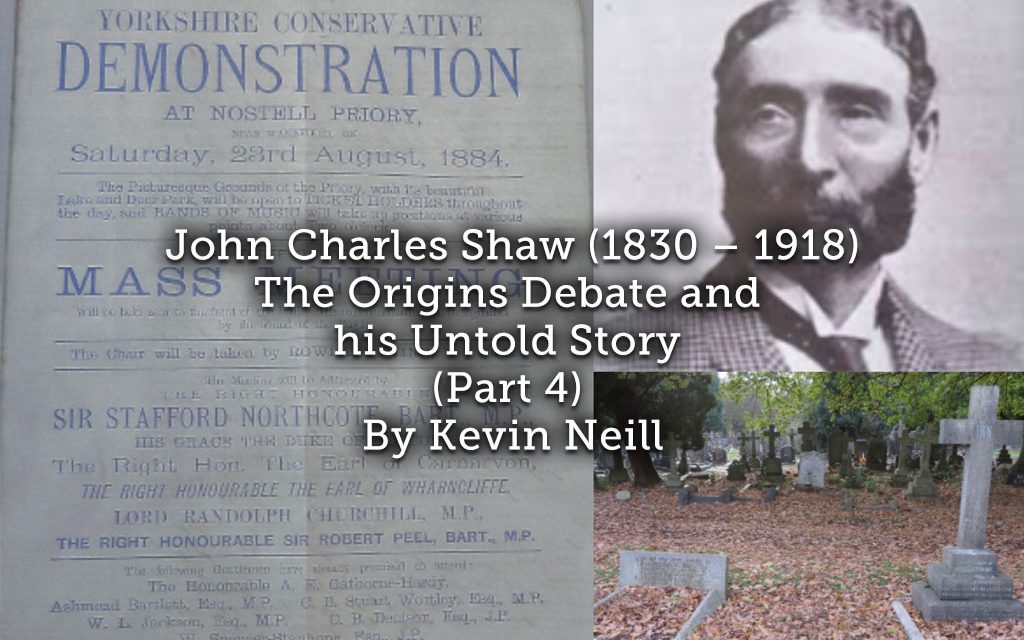
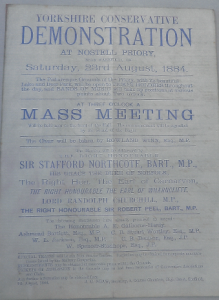
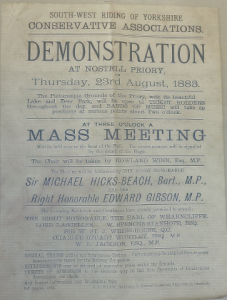
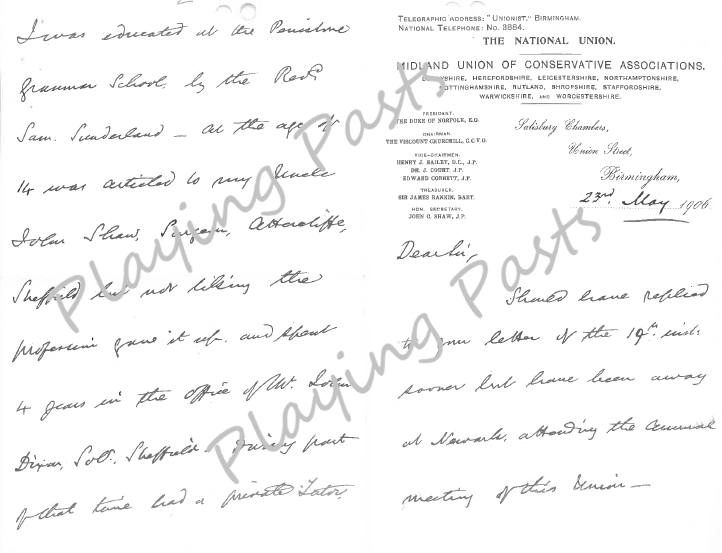
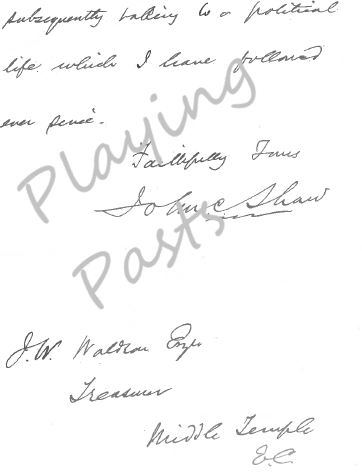
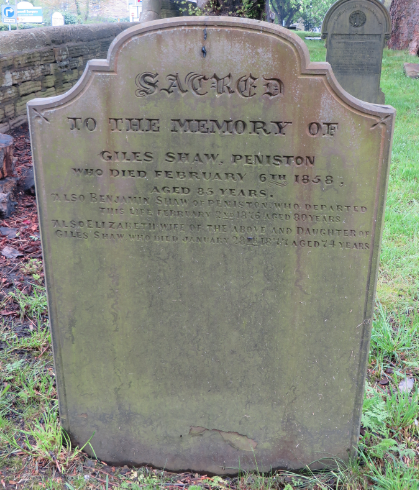
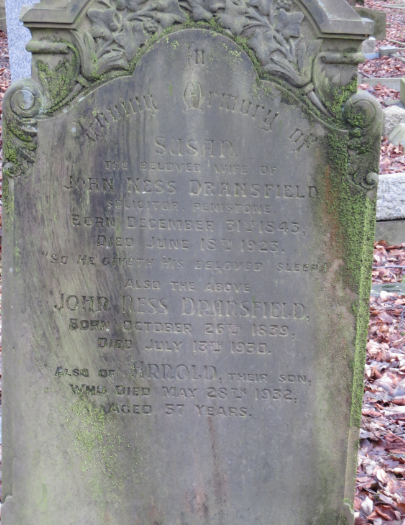
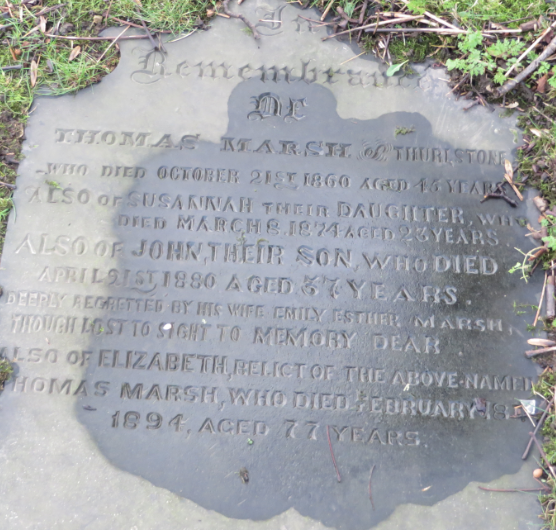
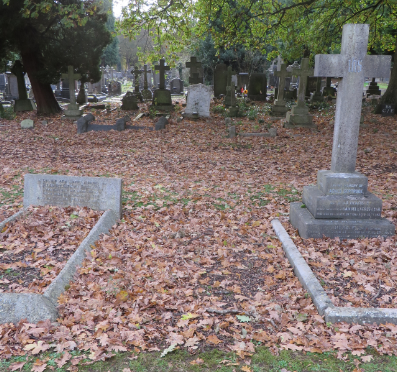
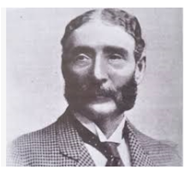
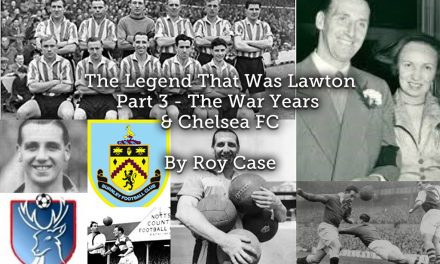
![“And then we were Boycotted”<br>New Discoveries about the Birth of Women’s Football in Italy [1933] <br> Part 8](https://www.playingpasts.co.uk/wp-content/uploads/2020/12/Boycotted-Marco-Part-8-440x264.jpg)
